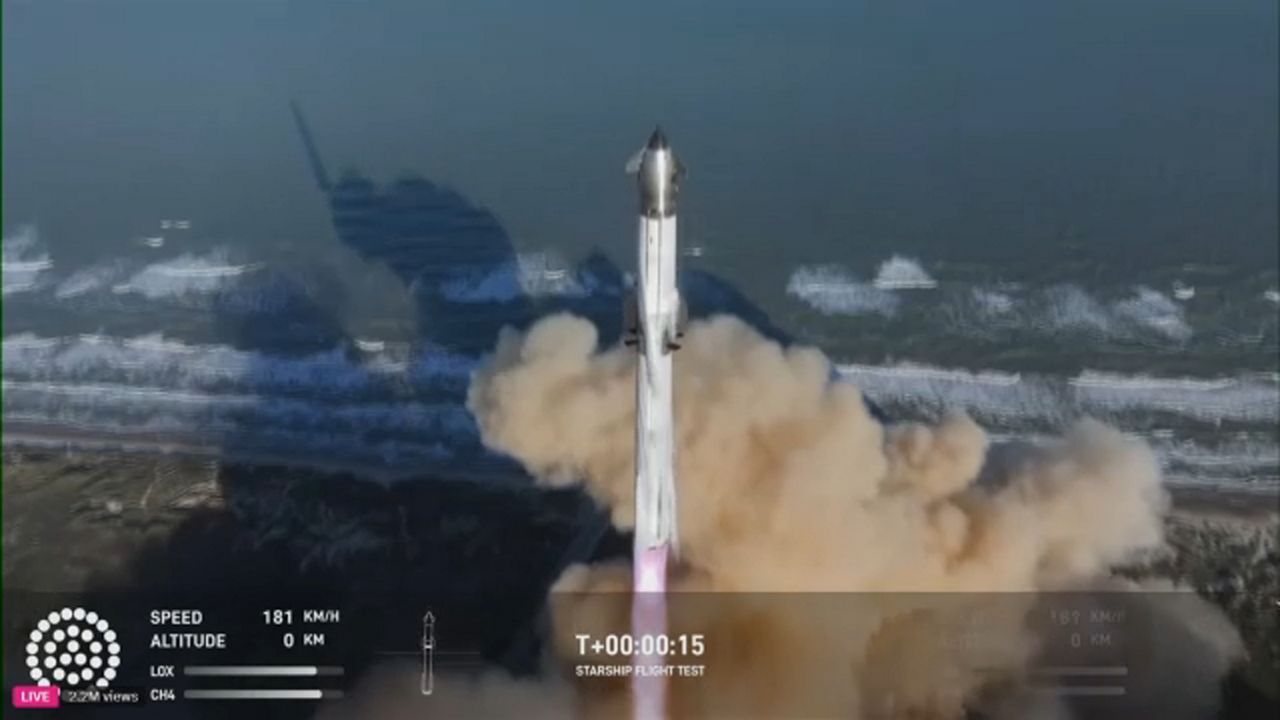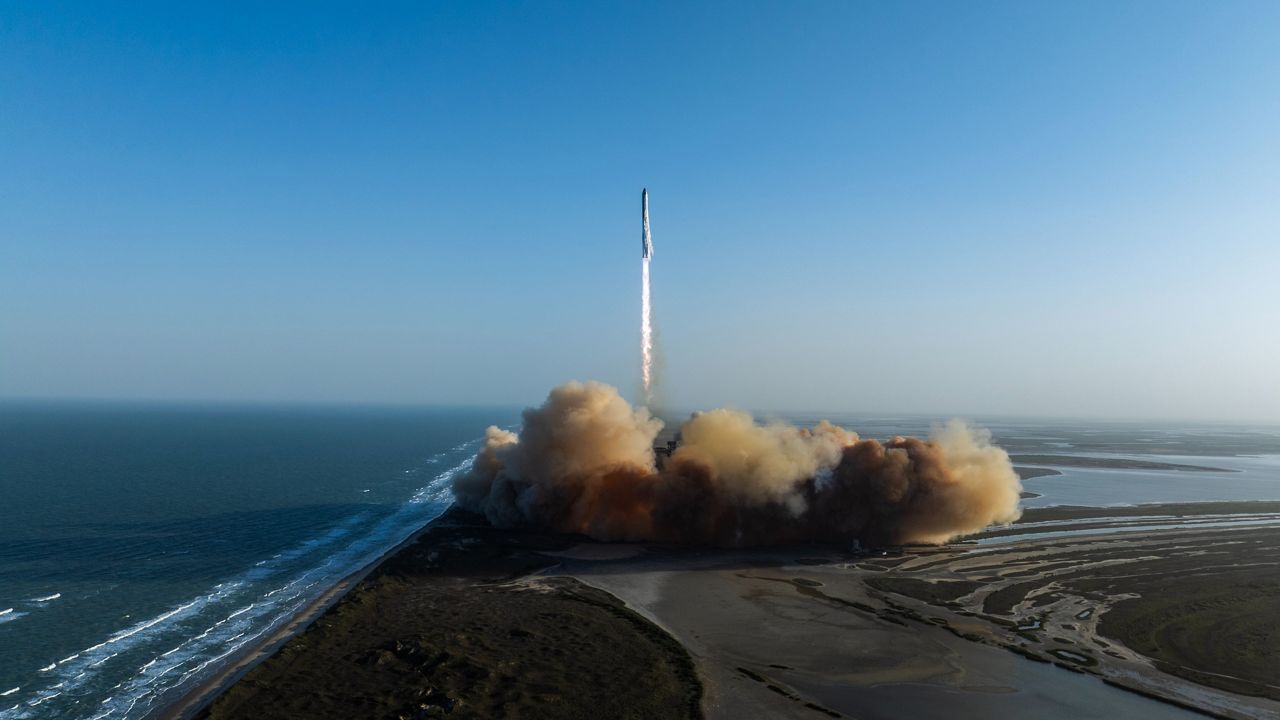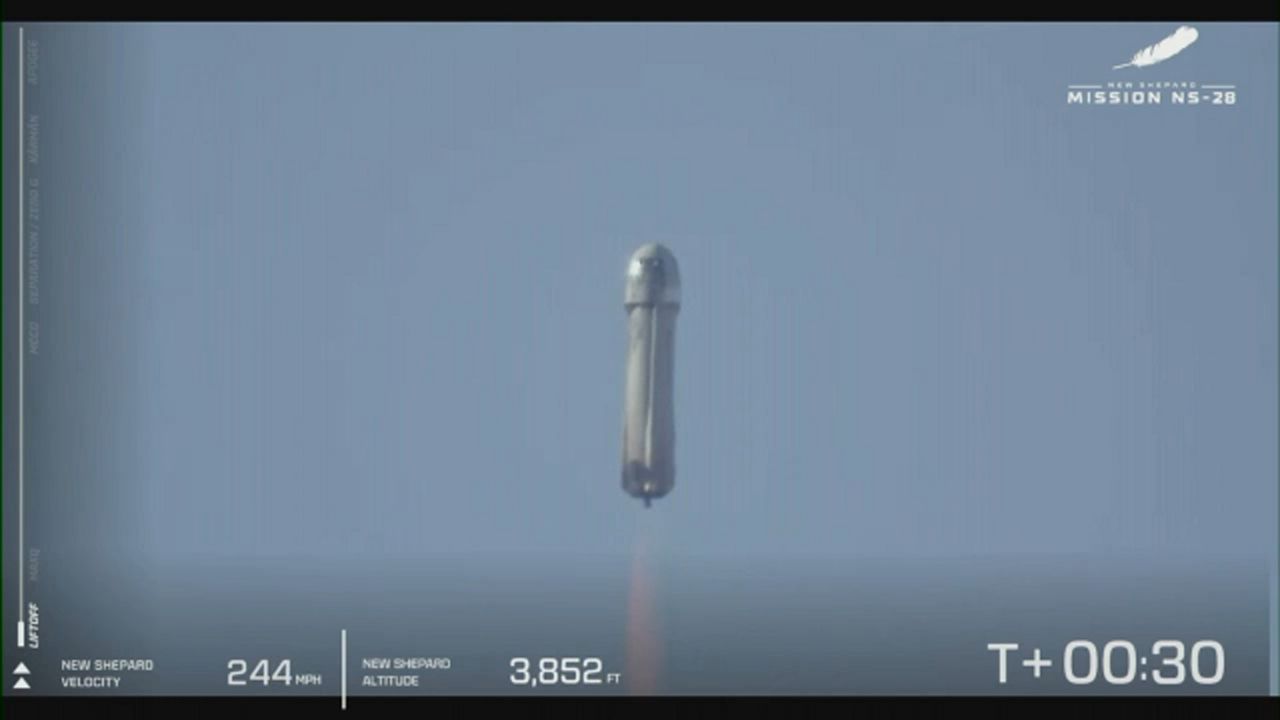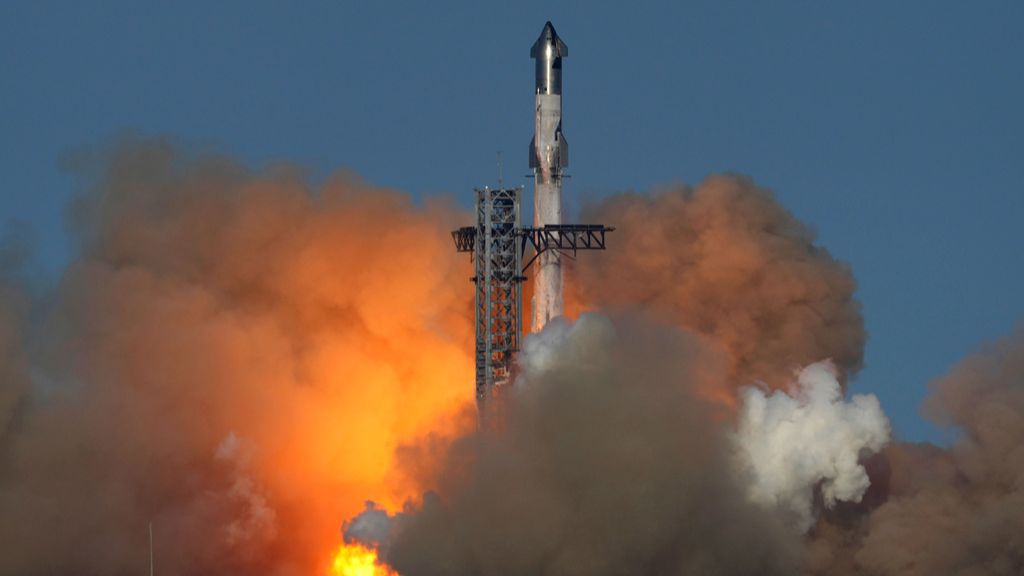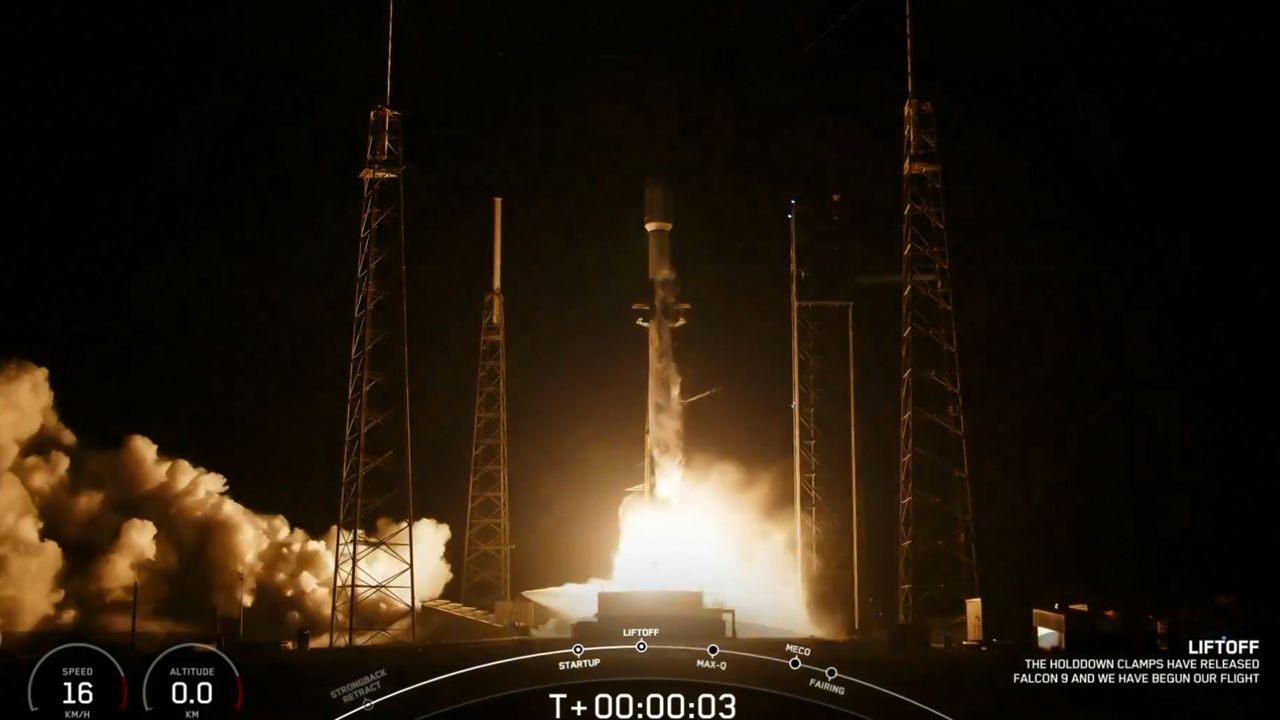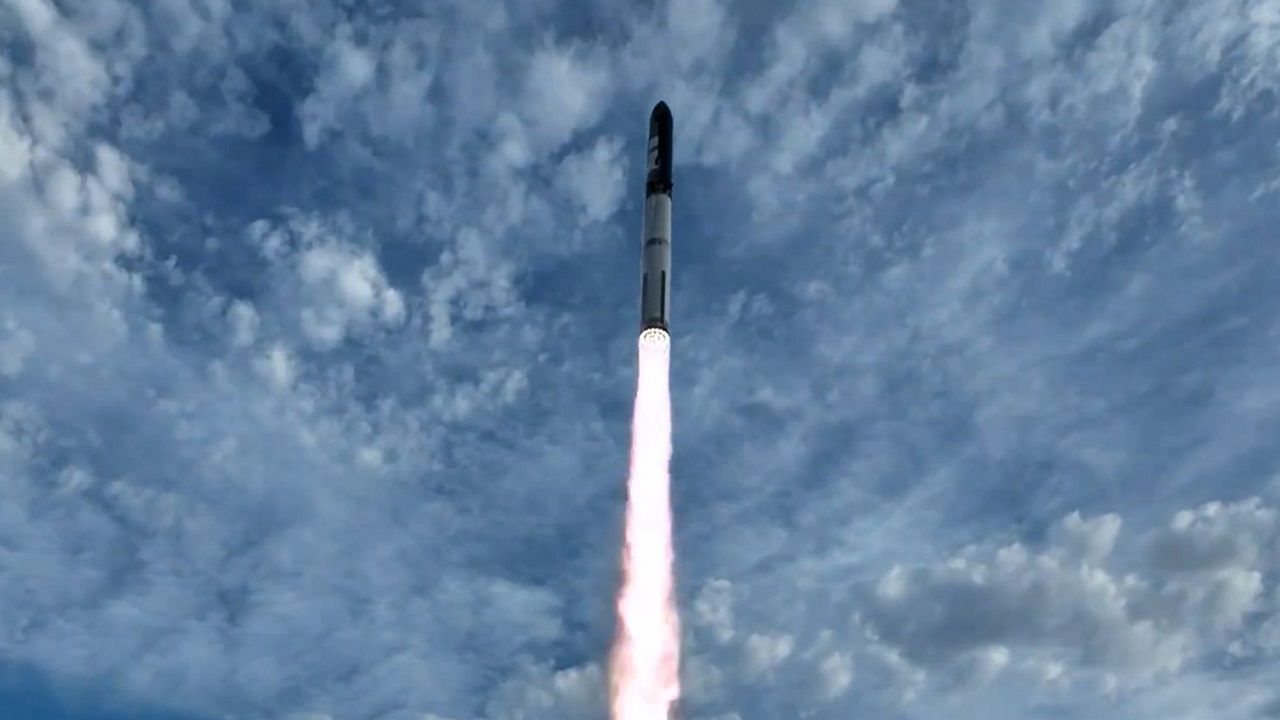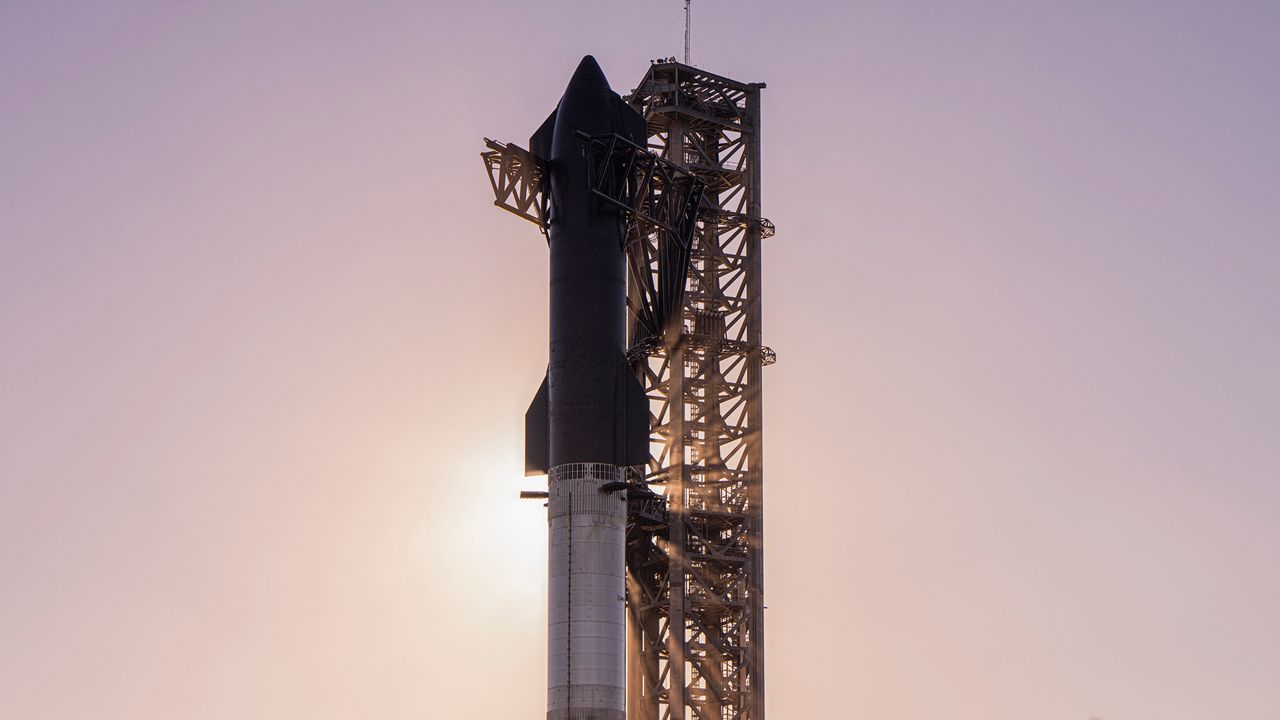BOCA CHICA BEACH, Tx. — SpaceX lost all communications with Starship's upper stage after it was able to catch the ship's massive rocket booster in the launch pad’s chopsticks for the second time during the seventh test flight on Thursday.
What You Need To Know
- All communications with Starship's upper stage was lost; SpaceX states a fire was started during the launch
- Super Heavy is the rocket booster part of the vehicle, while the spacecraft is called Starship; together, they are known as Starship
- SpaceX caught the first-stage booster
Moments after the famed 397-foot Starship (121 meters tall) launched from the company’s Starbase facility in Boca Chica, Texas, at 5:37 p.m. ET, the SpaceX team gave the all clear to allow the Super Heavy booster to be caught.
Liftoff of Starship! pic.twitter.com/7lrFjGXzAi
— SpaceX (@SpaceX) January 16, 2025
And seven and a half minutes after a successful launch, that’s exactly what happened: The Super Heavy rocket booster was captured by the launch tower’s chop sticks.
Mechazilla has caught the Super Heavy booster! pic.twitter.com/aq91TloYzY
— SpaceX (@SpaceX) January 16, 2025
Super Heavy is the rocket booster part of the vehicle, while the spacecraft is called Starship, which will send people back to the moon during the Artemis III. Together, they are known as Starship.
But during its live feed, SpaceX announced that eight and a half minutes after launch, all communications with Starship's upper stage, a new upgraded ship, was lost and eventually exploded over the Turks and Caicos Islands.
An unknown number of the six engines on Starship were lost.
“We were expecting ship engine cutoff about 40 seconds ago. We saw some of those engines start to go out prior to that point,” said Daniel Huot, a communications manager at SpaceX, who later confirmed, “We did lose the upper stage of the ship.”
“We can confirm that we did lose the ship” during the ascent phase of the launch, said SpaceX engineer Kate Tice.
SpaceX founder Elon Musk posted on X (formerly known as Twitter which he owns) video of the Starship's destruction as it returned to Earth.
Success is uncertain, but entertainment is guaranteed! ✨
— Elon Musk (@elonmusk) January 16, 2025
pic.twitter.com/nn3PiP8XwG
After the test flight, SpaceX posted on its website that a possible fire was started in the aft section of the ship.
"Following stage separation, the Starship upper stage successfully lit all six Raptor engines and performed its ascent burn to space. Prior to the burn’s completion, telemetry was lost with the vehicle after approximately eight and a half minutes of flight. Initial data indicates a fire developed in the aft section of the ship, leading to a rapid unscheduled disassembly," SpaceX stated.
Musk also posted there might have been an oxygen fuel leak but stressed that "Nothing so far suggests pushing next launch past next month."
Preliminary indication is that we had an oxygen/fuel leak in the cavity above the ship engine firewall that was large enough to build pressure in excess of the vent capacity.
— Elon Musk (@elonmusk) January 17, 2025
Apart from obviously double-checking for leaks, we will add fire suppression to that volume and…
During the livefeed, SpaceX stated it take time to determine exactly what happened.
The company warned that if anyone comes across pieces of Starship debris that they should not handle it and to call the SpaceX Debris Hotline at 1-866-623-0234 or send an email at recovery@spacex.com.
The first launch attempt of Starship happened in April 2023, and saw a series of failures that caused the rocket to explode.
During its second test in November 2023, SpaceX was forced to destroy Starship. The new stage separation, called hot stage separation, worked as designed, but it caused the Super Heavy rocket’s destruction.
For the fourth test in June 2024, additional thrusters were added to Starship to prevent it from rolling, which lead to its predecessor’s destruction in test three.
The fifth test in October 2024 saw the Starship's rocket booster being caught for the first time and while that did not happen during the sixth test and SpaceX was forced to do a controlled splashdown in the Gulf of Mexico, Starship itself performed well.
Not so lucky seven
This will be the seventh uncrewed flight test of Starship. It was supposed to go up on Wednesday, but poor weather forced the California-company to scrub the launch.
Spacex had a series of tests of new equipment and redesigns it wanted to try out before the launch took place.
SpaceX shared some of those updates:
A block of planned upgrades to the Starship upper stage will debut on this flight test, bringing major improvements to reliability and performance. The vehicle’s forward flaps have been reduced in size and shifted towards the vehicle tip and away from the heat shield, significantly reducing their exposure to reentry heating while simplifying the underlying mechanisms and protective tiling. Redesigns to the propulsion system, including a 25 percent increase in propellant volume, the vacuum jacketing of feedlines, a new fuel feedline system for the vehicle’s Raptor vacuum engines, and an improved propulsion avionics module controlling vehicle valves and reading sensors, all add additional vehicle performance and the ability to fly longer missions. The ship’s heat shield will also use the latest generation tiles and includes a backup layer to protect from missing or damaged tiles.
In addition, once in orbit, Starship would have deployed 10 Starlink simulators to test how payloads can be deployed.
These simulators were about the same size and weight as the next generation of Starlink satellites. SpaceX owns the Starlink company.
The Starship’s upper stage had several tiles that were removed to stress-test vulnerable areas of the craft. And others of different material were going to be tested to see how well they could protect Starship.
Starship was expected to splash down in the Indian Ocean.
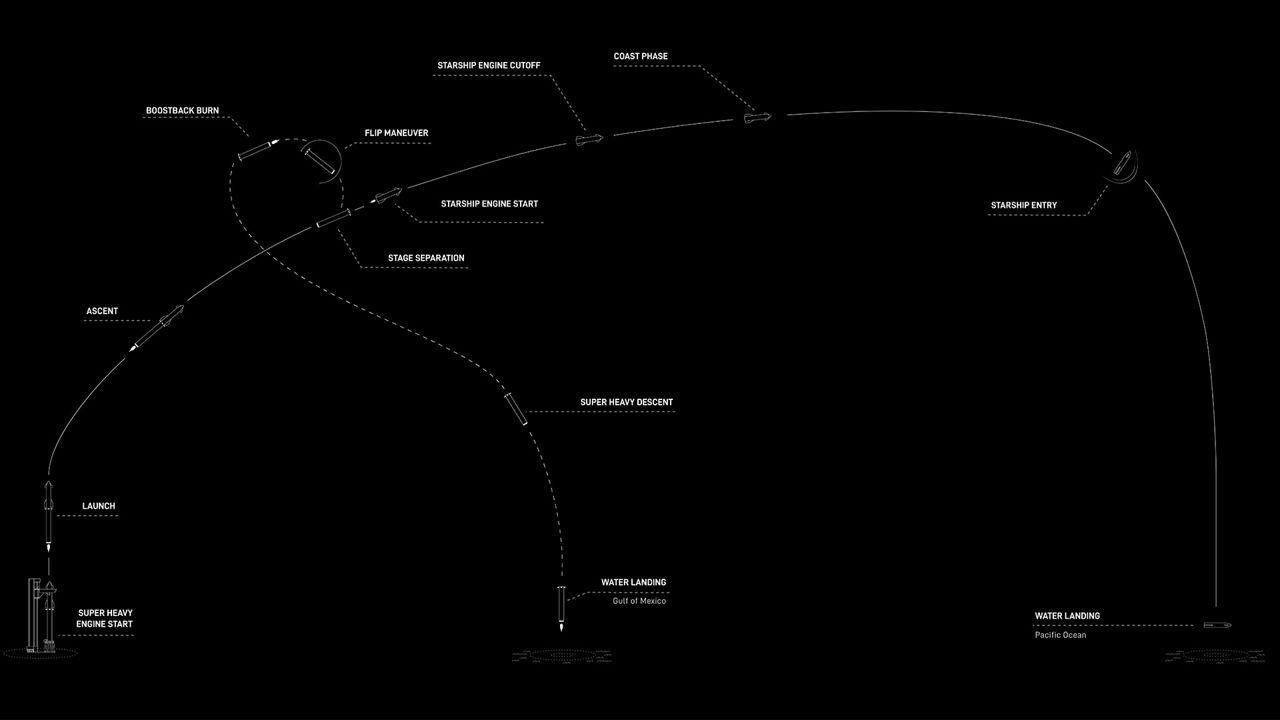
New tests for the Super Heavy first-stage booster
After the stage separation, SpaceX did catch the 232-foot (71 meter) tall first-stage booster Super Heavy using the launch tower’s metal arms, which have been called chopsticks.
The company shared some new tests and designs being used when it comes to catching the first-stage booster.
“On the sides of the vehicle, non-structural versions of ship catch fittings are installed to test the fittings’ thermal performance, along with a smoothed and tapered edge of the tile line to address hot spots observed during reentry on Starship’s sixth flight test. The ship’s reentry profile is being designed to intentionally stress the structural limits of the flaps while at the point of maximum entry dynamic pressure. Finally, several radar sensors will be tested on the tower chopsticks with the goal of increasing the accuracy when measuring distances between the chopsticks and a returning vehicle during catch.”
In addition to hardware upgrades to the launch and catch tower, the Super Heavy booster will reuse a Raptor engine from Starship’s 5th flight test. It was during that test that the booster was caught by the launch tower for the first time.




